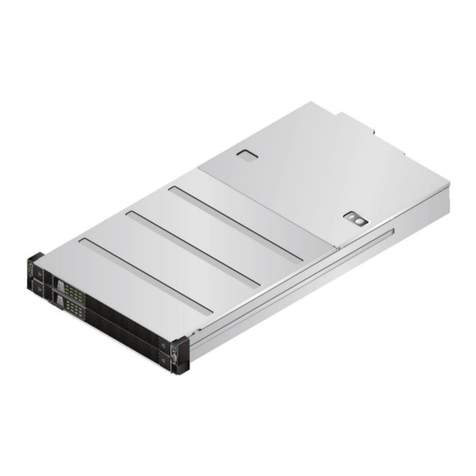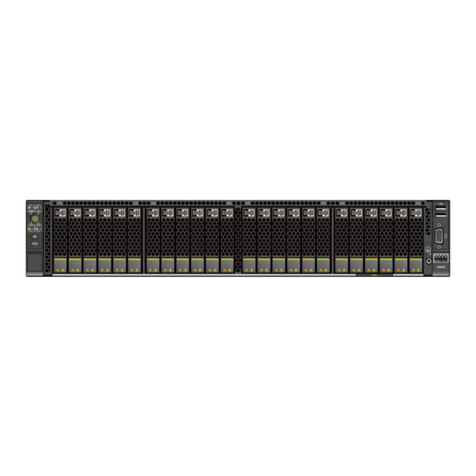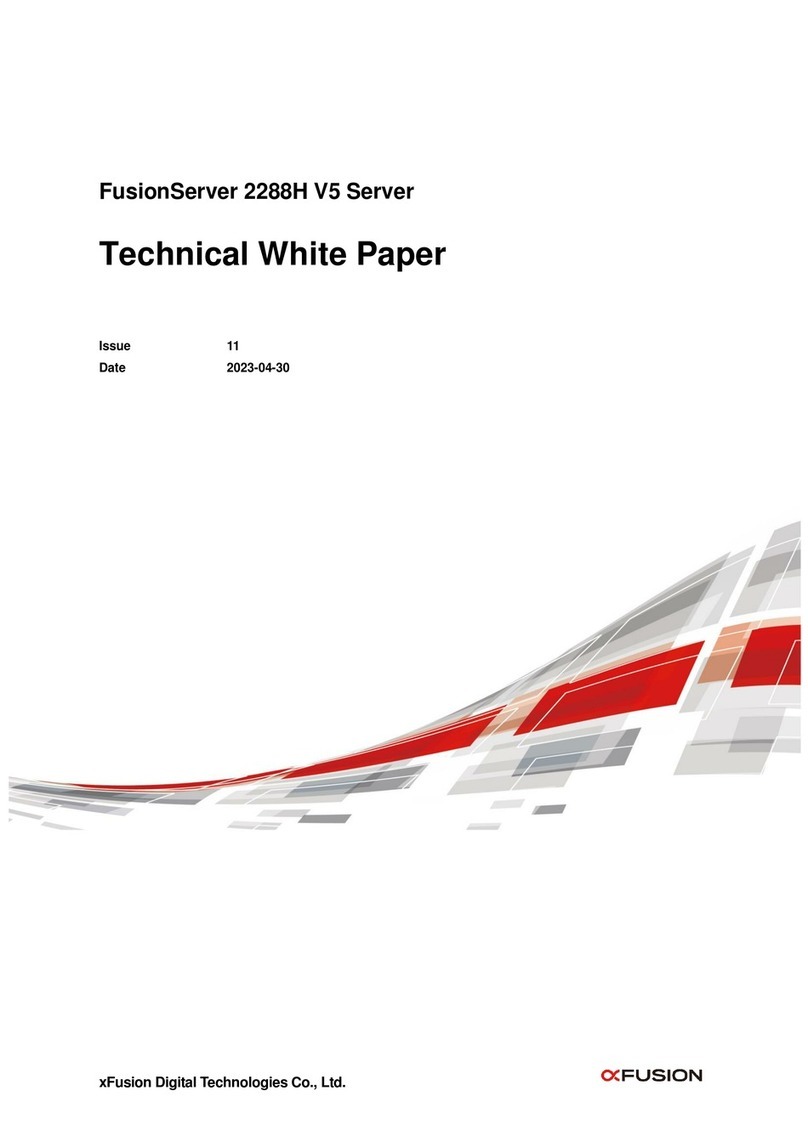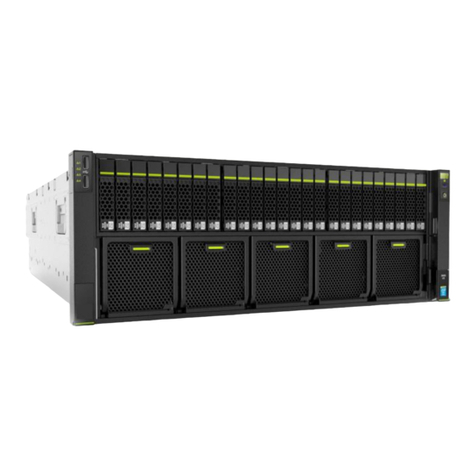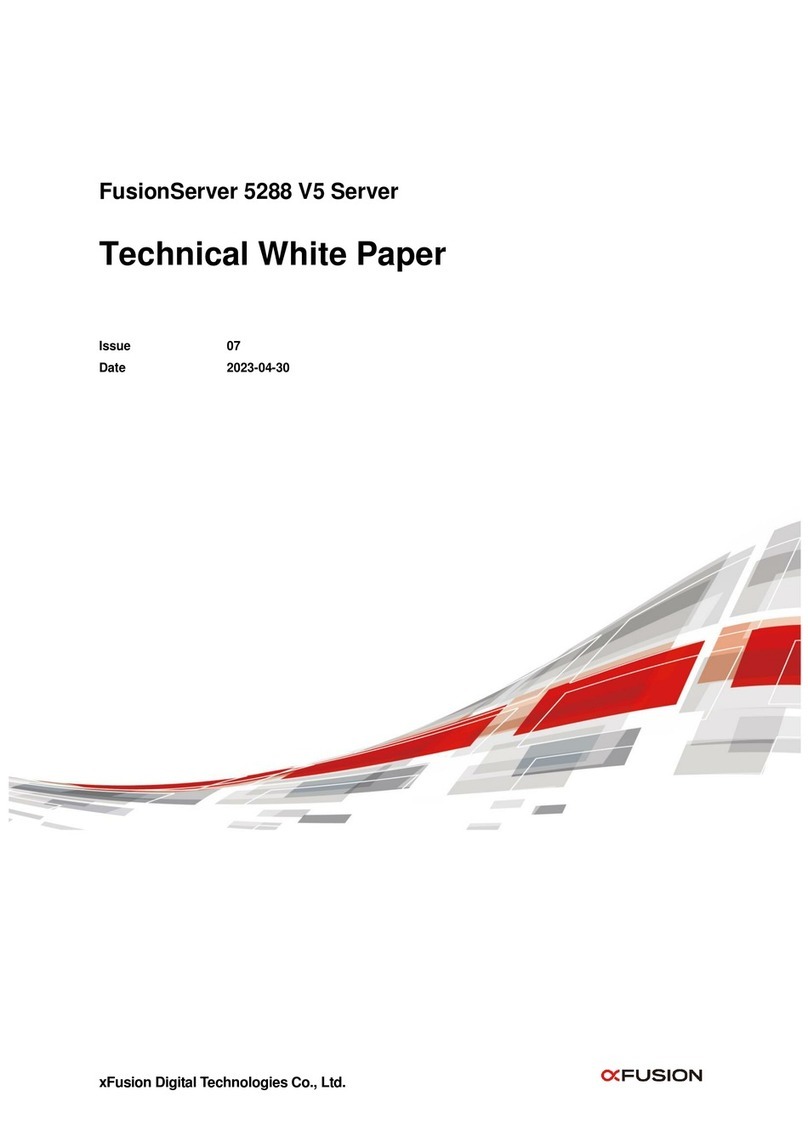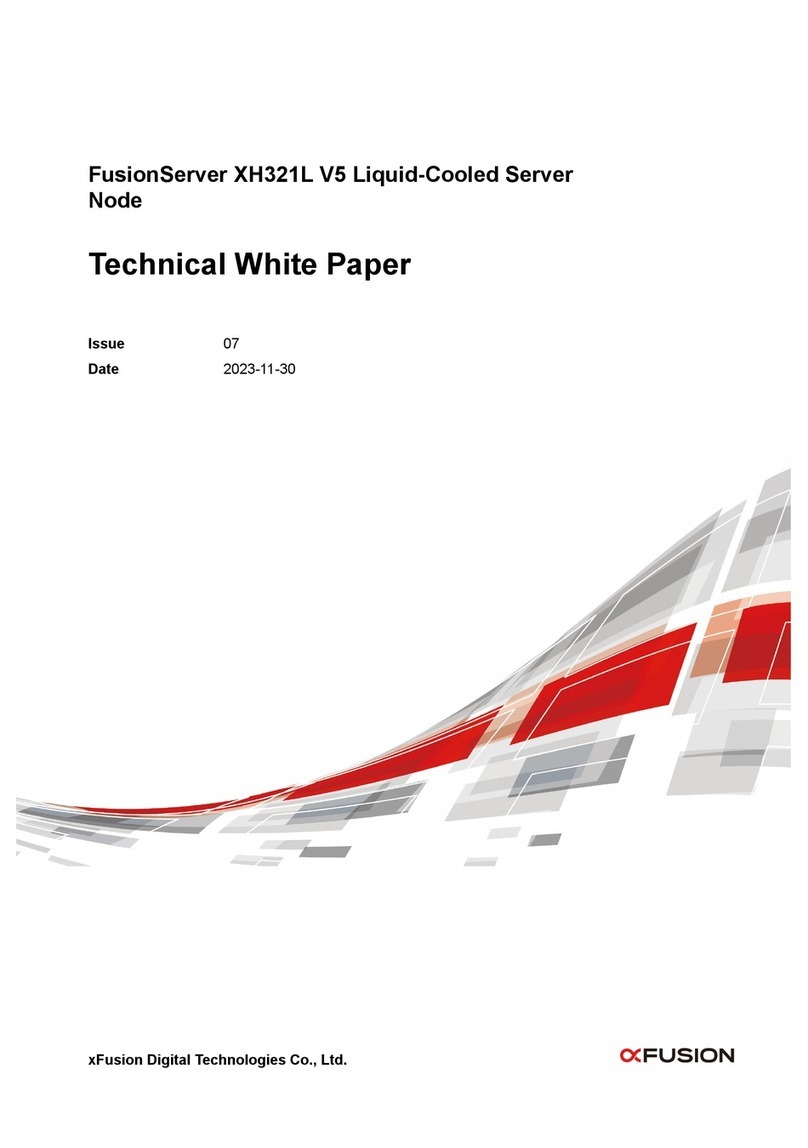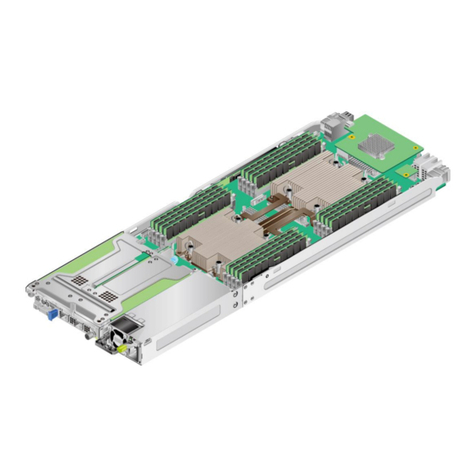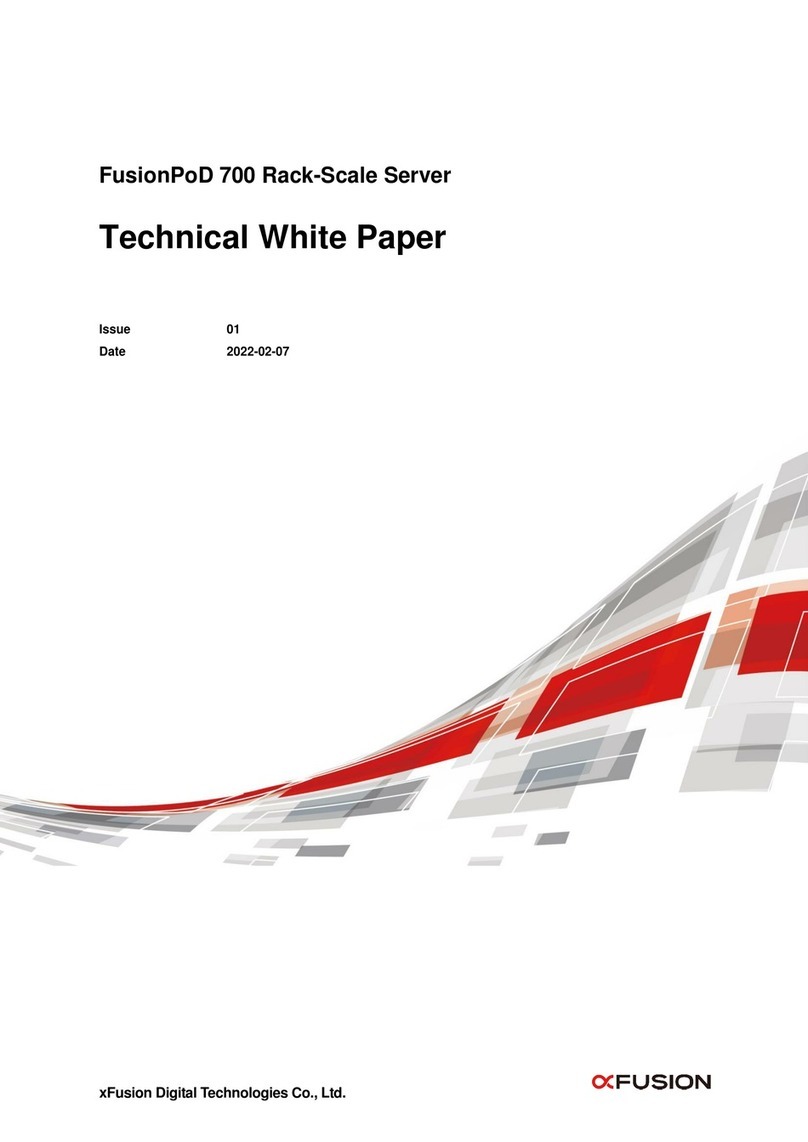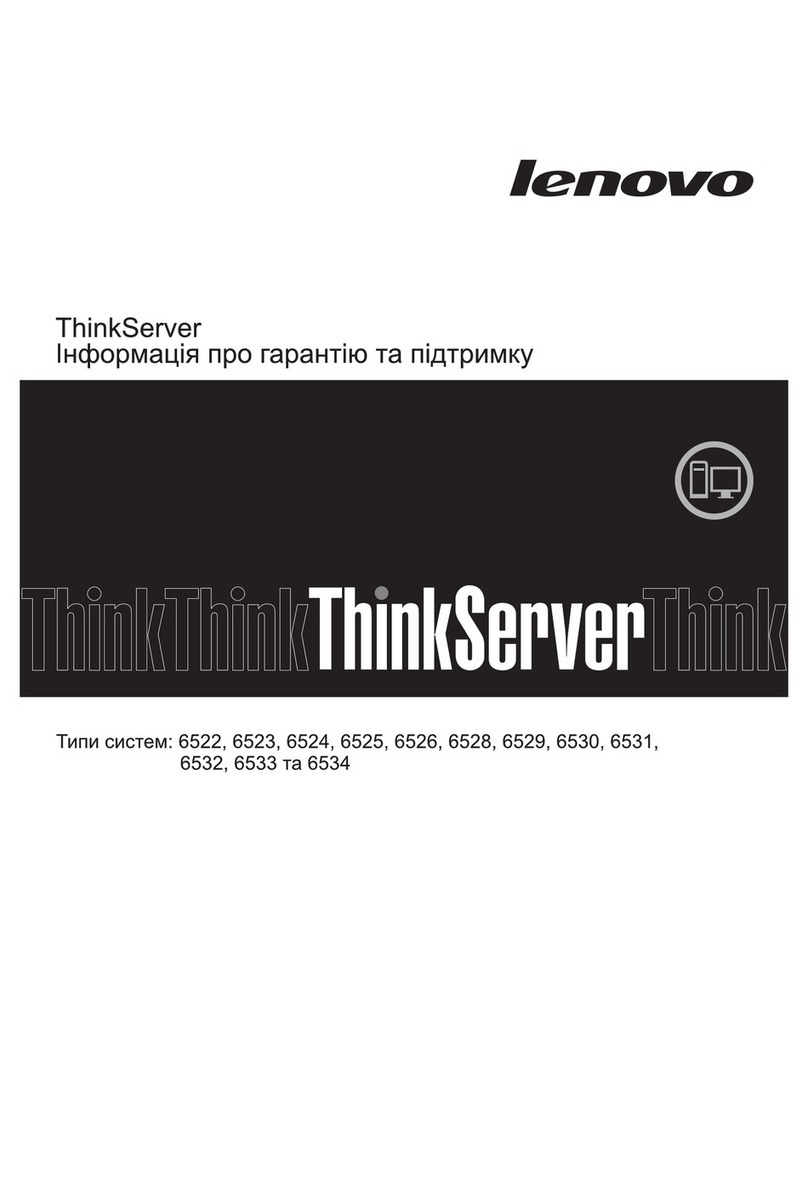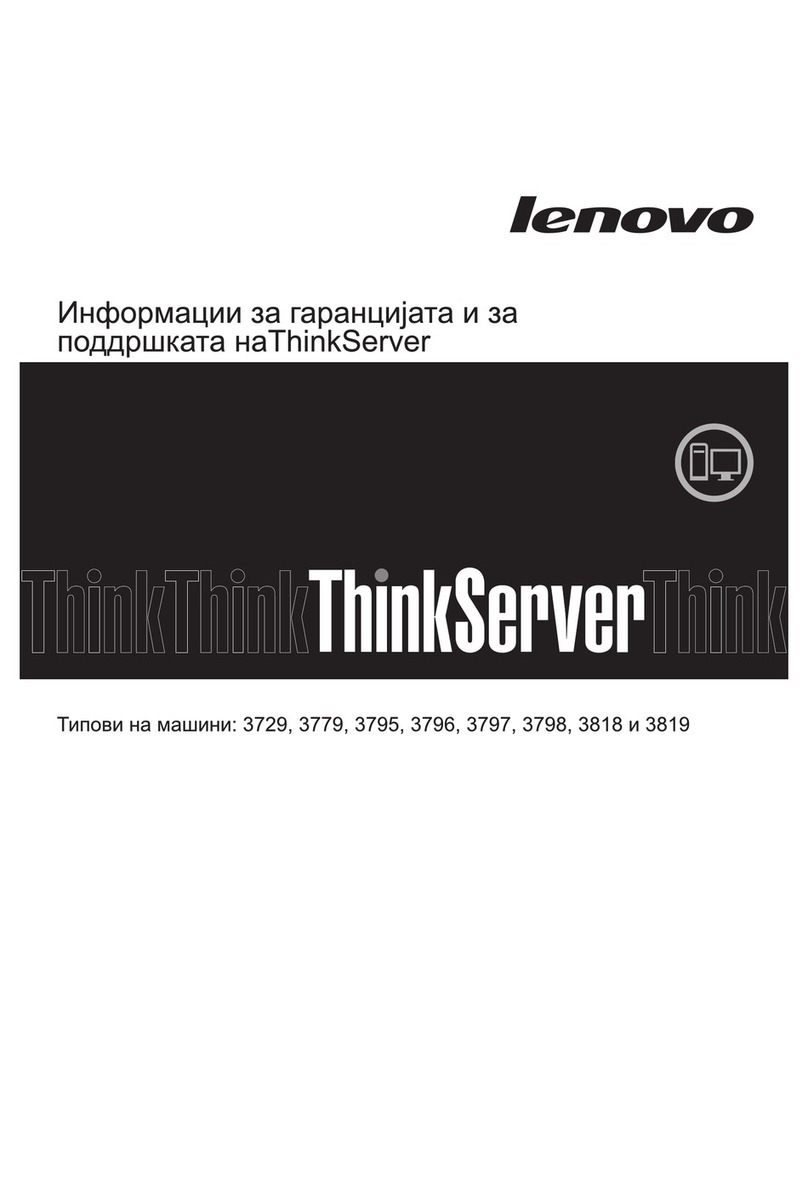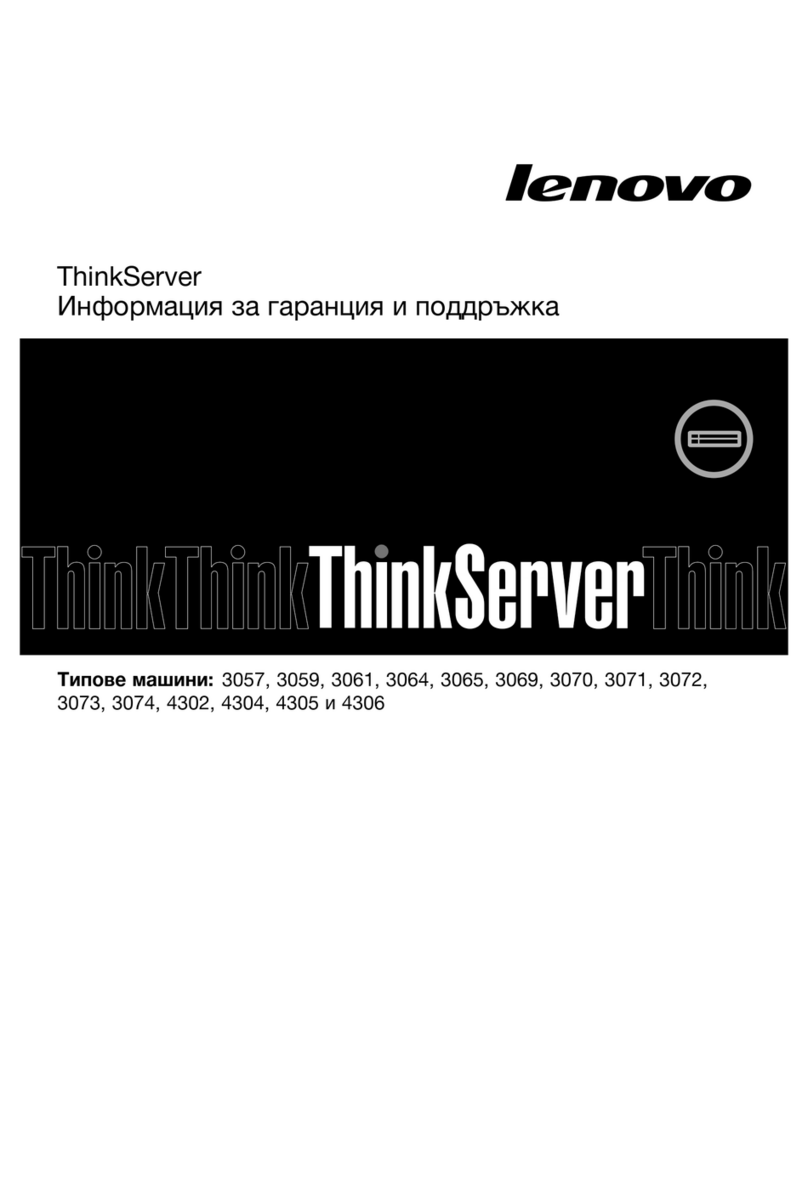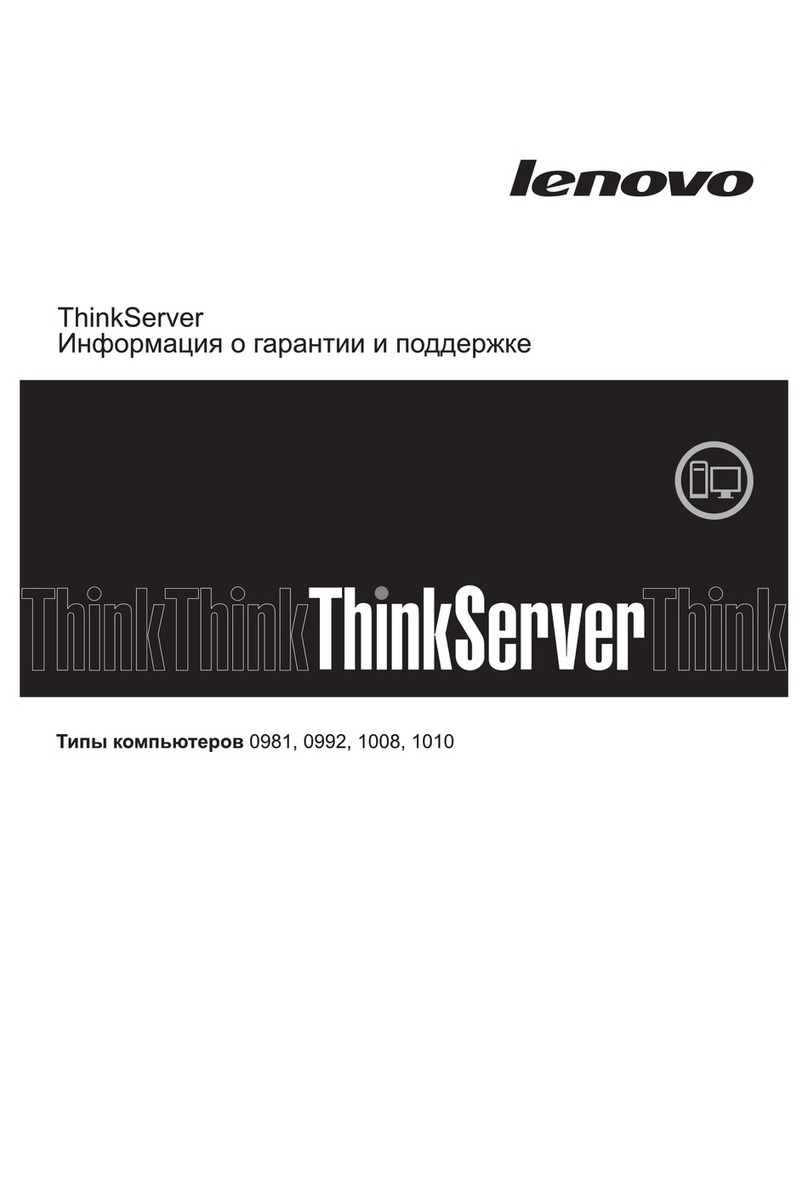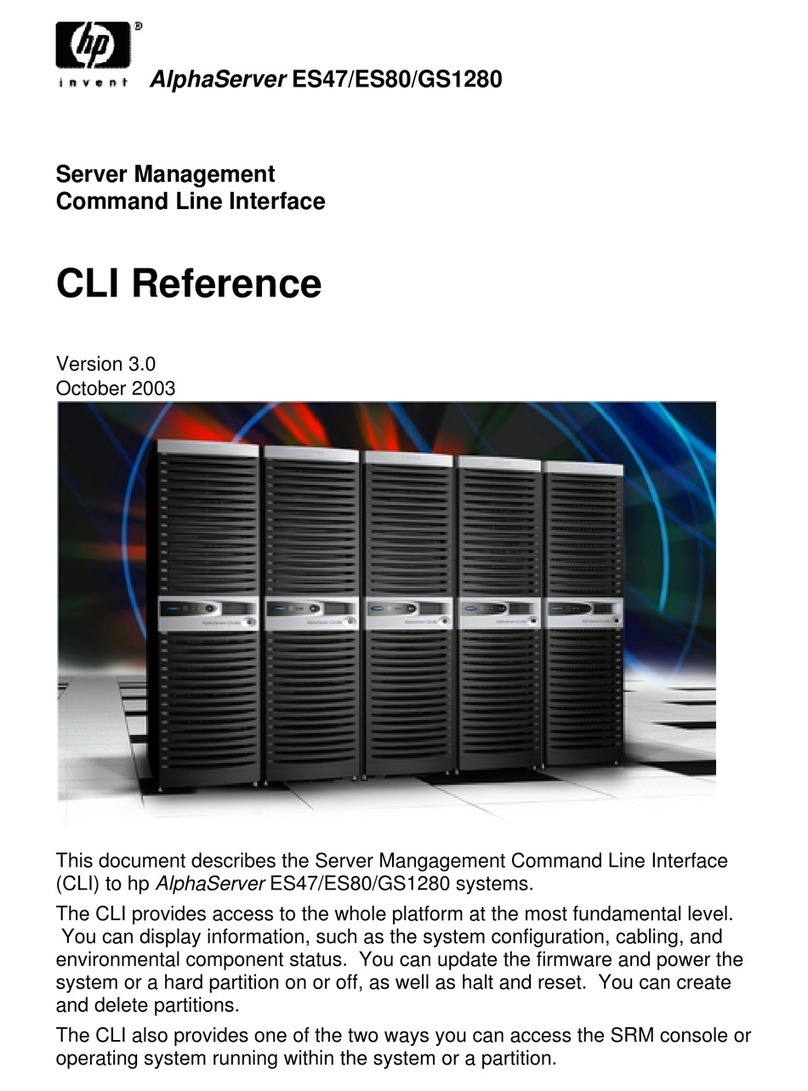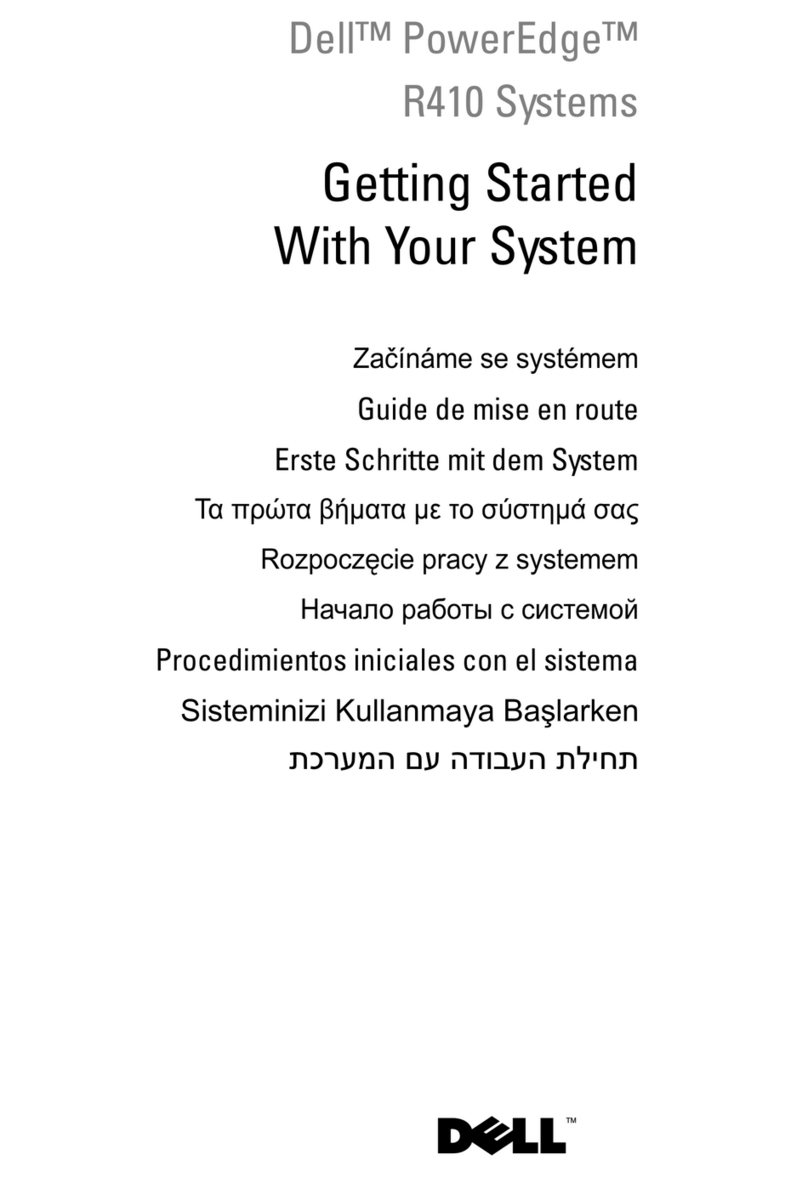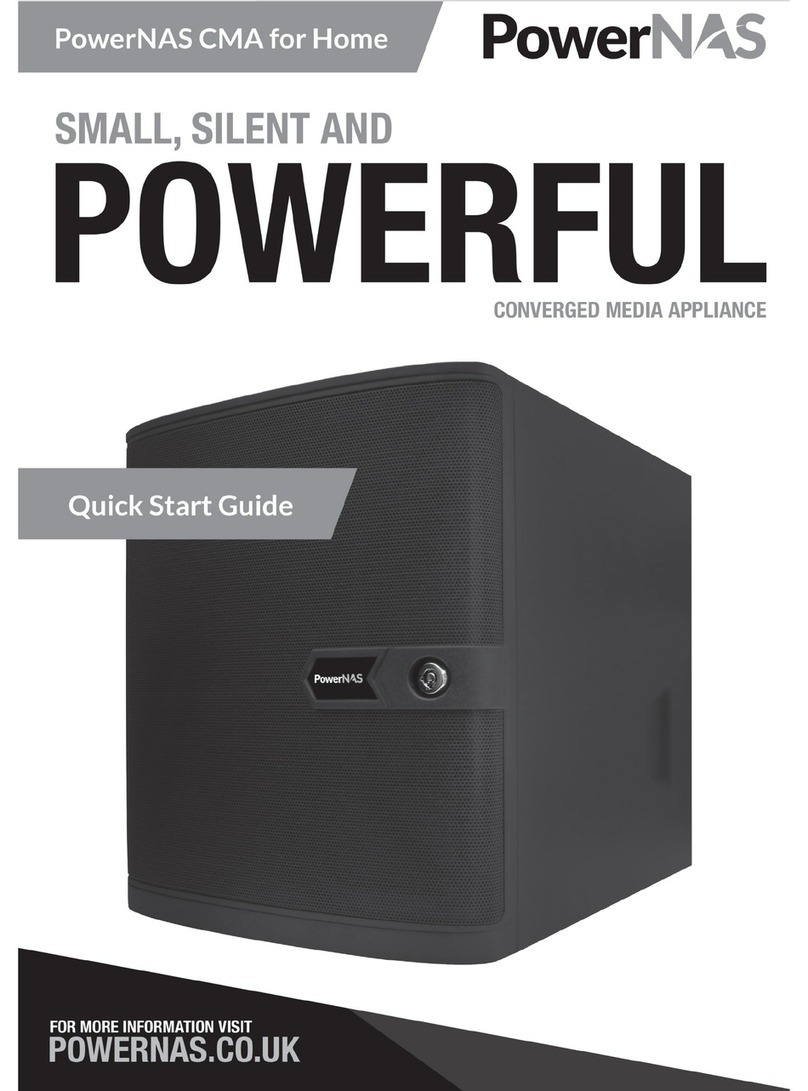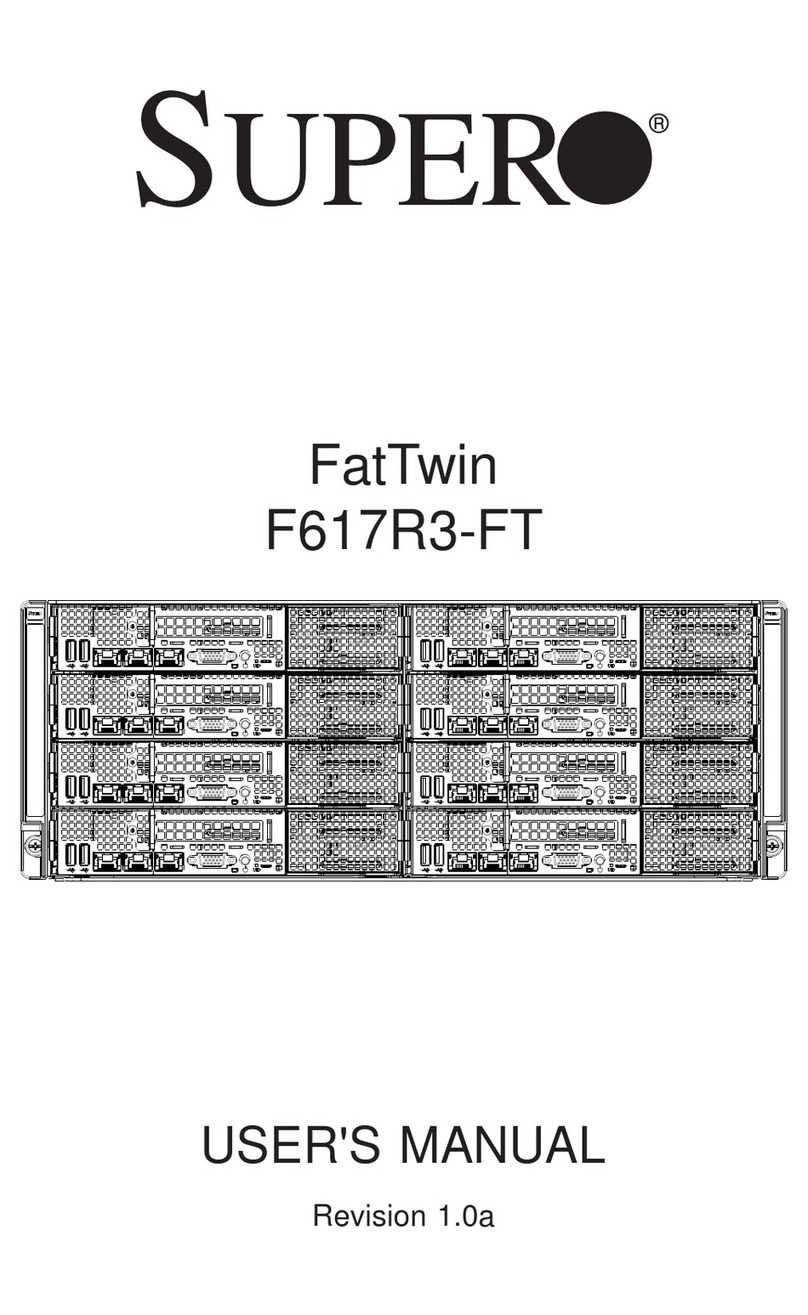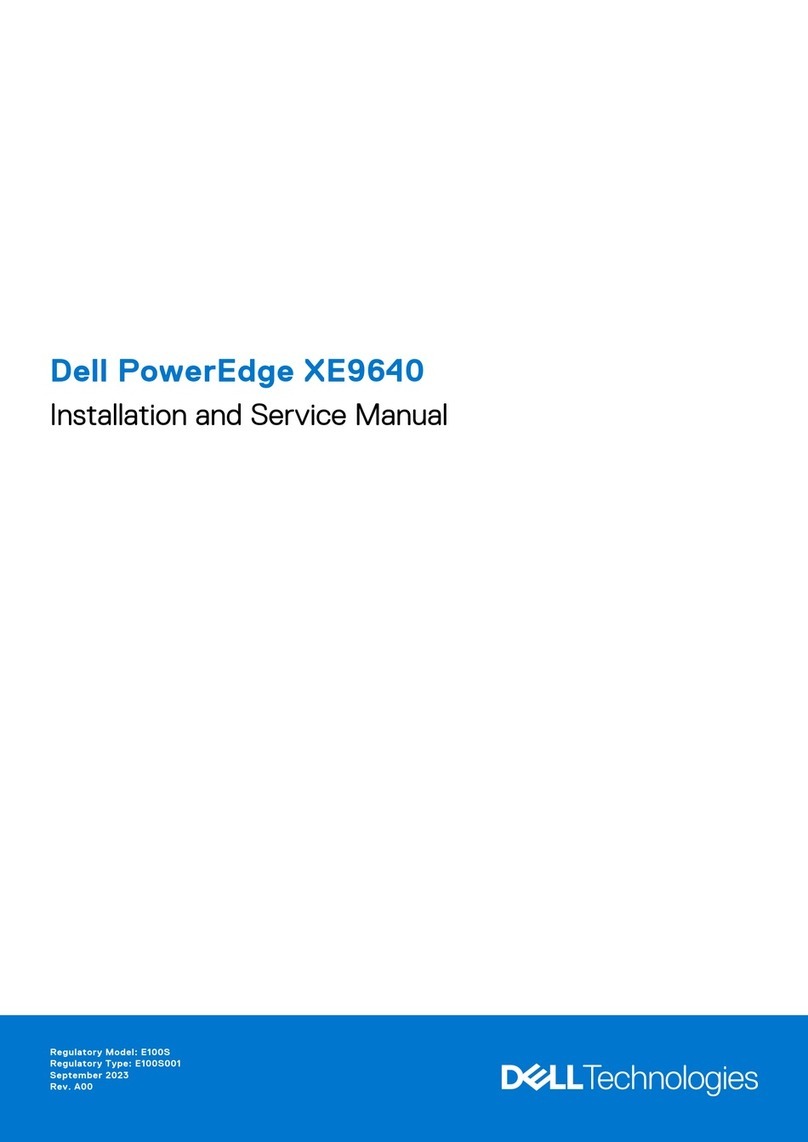⚫It supports 12 SATA/SAS HDDs or SSDs. The SSDs deliver higher I/O
performance than HDDs. An SSD supports approximately 100 times more I/O
operations per second (IOPS) than a typical HDD.
⚫Four half-height half-length (HHHL) PCIe SSD cards can be configured to
support high-bandwidth low-delay data access.
Availability and Serviceability
⚫Carrier-class components with process expertise ensure high system reliability
and availability.
⚫The server node supports twelve 2.5-inch or 3.5-inch hot-swappable drives. It
supports RAID 0, 1, 1E, 5, 6, 10, 50, and 60, depending on the RAID controller
card used. It also uses a supercapacitor to protect the RAID cache data against
power failures.
⚫The server provides simplified O&M and efficient troubleshooting through the
UID/HLYLED indicators on the front panel, fault diagnosis LED, and iBMC
WebUI.
⚫The SSDs offer better reliability than HDDs, ensuring continued system
performance.
⚫The iBMC monitors system parameters in real time, triggers alarms, and
performs recovery actions in case of failures, minimizing system downtime.
⚫For more information about the warranty in the Chinese market, see Warranty.
Manageability and Security
⚫The built-in iBMC monitors server operating status and provides remote
management.
⚫The integrated Unified Extensible Firmware Interface (UEFI) improves setup,
configuration, and update efficiency and simplifies fault handling.
⚫The Advanced Encryption Standard–New Instruction (AES NI) algorithm allows
faster and stronger encryption.
⚫Intel Execute Disable Bit (EDB) function prevents certain types of malicious buffer
overflow attacks when working with a supported OS.
⚫The Network Controller Sideband Interface (NC-SI) allows a network port to
serve as a management port and a service port for maximized return on
investment (ROI) for customers. The NC-SI feature is disabled by default and can
be enabled through the iBMC or BIOS.
⚫The trusted platform module (TPM) 2.0 provides advanced encryption functions,
such as digital signatures and remote authentication.
The service port with NC-SI enabled supports the following configuration:
⚫Configuring the LOM port (NIC Mezz) of the server as the service port with NC-SI enabled.
LOM port 1 is configured by default.
⚫Enabling, disabling, and setting avirtual local area network (VLAN) ID for this port. The VLAN
ID is 0and disabled by default.
⚫Configuring IPv4 addresses (IPv4 address, subnet mask, and gateway) and IPv6 addresses
(IPv6 address, prefix length, and gateway) for this port.
